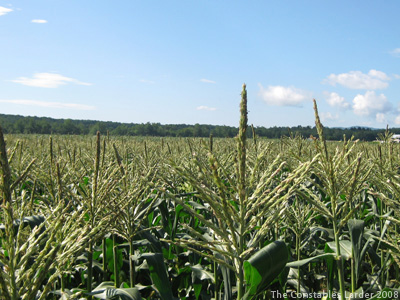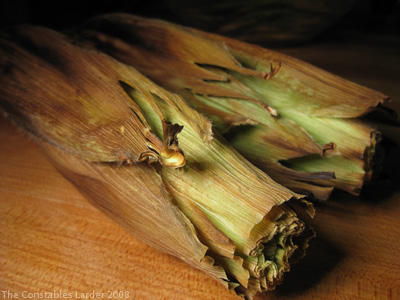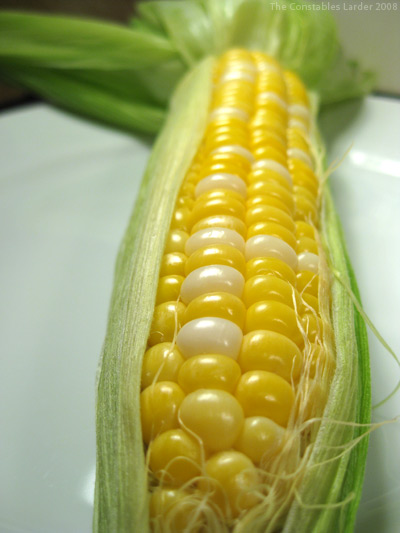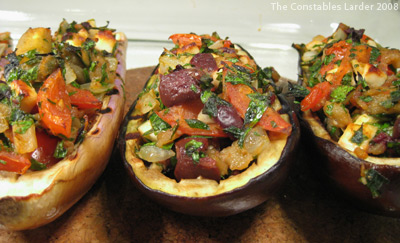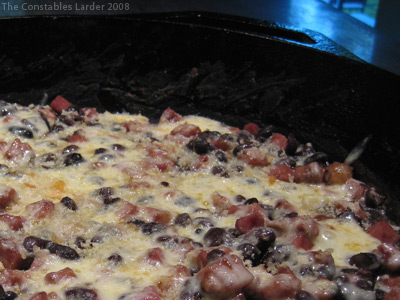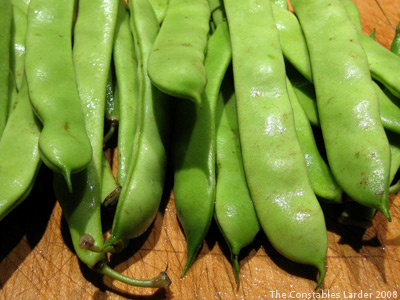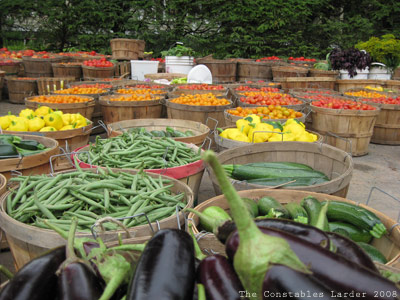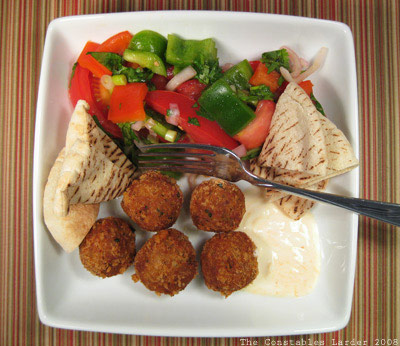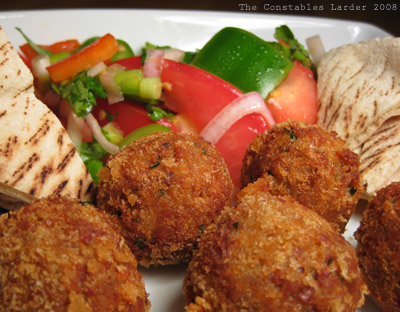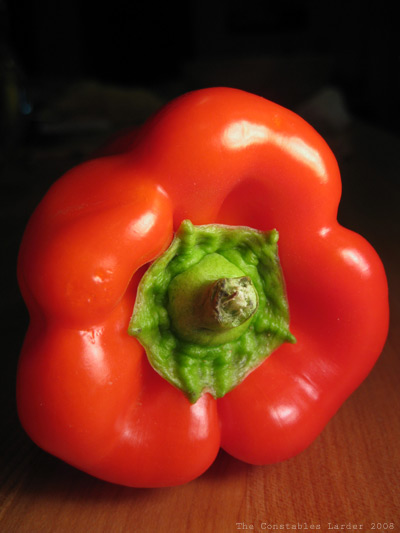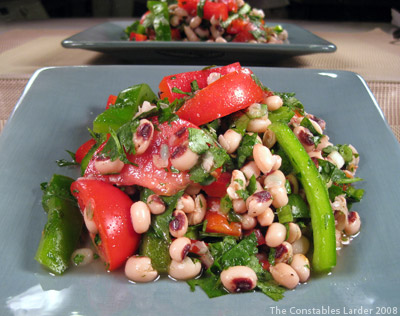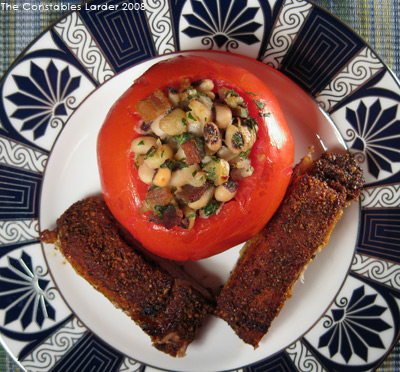
Well this was — hold on, I need to pour another glass of wine — an interesting night but the results were actually delicious (yes, miracles happen). You are going to say, you did WHAT with your oven in July heat? Well, let’s start with confessions. I left the grill on last night and so ran out of propane —
hey wait a sec, it was a long day of work and I was tired!
yeah?
well, that’s what my wife said too.
Anyway, the salient point is that outdoor cooking was out. I got home from work and the first question as I fed the munchkin was (well, the first question after, no you can’t “eat that plum / watch tigger and poo / pick mummy up from the train” … before eating your dinner) … ahem, was “what has to be used?” Answer: pork loin, the black-eyed peas I didn’t use for the salad the other day, and a couple of fat tomatoes.
DRY RUB PORK
I’ve fallen in love with dry rubs. Tonight’s combination came out really nicely (query: do they all?):
1 tsp salt
1 tsp brown sugar
1/2 tsp coriander seeds
1/2 tsp whole black peppercorns
1/2 tsp cumin seeds
1/2 tsp mustard seeds
1/2 tsp smoked paprika
I ground up everything but the salt and brown sugar in a spice grinder (okay it was Lisl’s coffee grinder but we won’t go there, will we? no, I didn’t think so). I had just over a pound of “family style” pork loin and so rubbed the spice mixture over it and let sit for about 20-30 minutes.
Since my grill was not an option, I broiled the pork on both sides in the oven for 2 minutes each side on a high rack (and sitting on a broiling pan), and then dropped it down to the middle of the oven and baked it at 300F for about 1.5 to 2 hours. Halfway through I pulled it out of the oven and dribbled olive oil and some apple cider vinegar on the top. Result? Killer. The outside crust was crunchy and the lower-heat cooking kept the inside moist. I should note that the pork loin was still in one piece, not sliced into “boneless ribs” as some butchers are doing these days — if you have smaller pieces you’ll have to reduce cooking time to keep the pork from drying out.
STUFFED TOMATOES WITH BLACK-EYED PEAS
2 large tomatoes
1.5 cups cooked black-eyed peas
1 handful of Italian parsley
1 large shallot
Red wine vinegar
olive oil
salt & pepper
In my case, I already had some leftover black-eyed peas, but if you are starting from scratch: soak 1/4 lb of black eyed peas for several hours, then drain, cover with fresh water, bring to a boil, then simmer loosely covered for 30 minutes (note: if you don’t have time to soak, no worries, just cook until tender, probably another 20 to 30 min).
Mince up a shallot and lightly saute it in some olive oil (note: if you want to save the extra cleanup, skip the sauteing and just mix them in raw).
Chop up a large handful of Italian (flat leaf) parsley.
Combine the peas, shallots, and parsley in a bowl. Add a pinch of salt and ground pepper, a teaspoon of red wine vinegar, and a tsp of virgin olive oil. Add more vinegar to taste. Keep on mixing and adding salt until you are just a hair past how much salt you would normally have in the dish.
Take your tomatoes and carve off the tops of both (just like taking off the top of a pumpkin). Carefully take a small spoon and scoop out the flesh and seeds in the middle of the tomato, and let any liquid run out.
Get the oven up to 450F. Stuff the tomatoes with the mixture, place in a small baking dish, dribble some olive oil on the top and around the sides of the tomatoes, and place in the oven for 20 minutes. It should all melt together nicely when you cut into it.
Final Notes:
Another confession (there’s been a lot of that in this post it seems): you’ll see in the picture at the top something in the stuffed tomato that looks suspiciously like bacon. That’s because it is bacon. I had a misguided notion, but I can say that both Lisl and I had enough forkfuls missing the bacon that we were convinced it was much better without. Which is why I have the gall to put the vegetarian tag on this post, since my vegetarian friends can make the stuffed tomato dish. We’ll just pretend the bacon never happened. Photoshop, anyone?
 There was a time when I hit the magazine racks once a month to choose a magazine out of the Gourmet, Saveur, Bon Appetit, and Food & Wine selection. I never knew which title I would want each month. I bought them for inspiration and the fabulous photography (who doesn’t love some good food pr0n?). But I have to admit, I’m wondering why I would spend the money on magazines at all when I can barely keep up with excellent posts from food bloggers.
There was a time when I hit the magazine racks once a month to choose a magazine out of the Gourmet, Saveur, Bon Appetit, and Food & Wine selection. I never knew which title I would want each month. I bought them for inspiration and the fabulous photography (who doesn’t love some good food pr0n?). But I have to admit, I’m wondering why I would spend the money on magazines at all when I can barely keep up with excellent posts from food bloggers.

